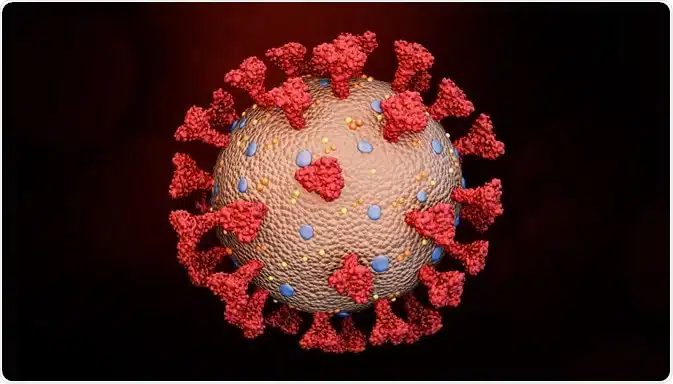A study based on computer simulations on SARS-CoV-2 variants at Rochester Institute of Technology (RIT), US, found how S proteins function not only to infect cells but also attach themselves to the host cells of bats and mammals in a similar way. The findings were based on humans and some species of bat in the genus Rhinolophus. Spike proteins in several SARS-CoV-2 variants interact with ACE2 receptors on host cells.
What is SARS-CoV-2?
SARS-CoV-2(Severe Acute Respiratory Syndrome) is a family of virus called coronaviruses that causes a respiratory disease called COVID-19. The viral cover of Coronavirus is made up of three proteins that include membrane protein(M), an envelope protein(E), and spike protein(S). Further, the S proteins of Coronavirus can be divided into two subunits, which include the N-terminal S1 subunit forming the globular head of the S protein, and the C-terminal S2 subunit that forms the trunk of the protein, which is directly implanted into the envelope.
Gregory Babbitt, Associate Professor, RIT, said in a statement that they were hoping evolution would occur soon as the virus is getting more used to humans than bats, but to their disappointment, there wasn’t a lot of change happening. This is because the binding site did not evolve much, so there was nothing that might stop it from transferring from humans to bats.
Scientists globally had evidence that bats first transmitted SARS-CoV-2 to humans in December 2019, and later the virus evolved into two other variants called Omicron and Delta. Meanwhile, a US-based scientist, who was working at Wuhan’s research lab, recently said that COVID-19 was a man-made virus that was released from Wuhan Institute of Virology (WIV), a state-run and funded research facility, a New York report said.

However, in this study, the researchers used a computer simulation method called molecular dynamics. In this method, a protein was put in a simulated solution and they watched it moving. A graphic processor was used to see how each atom performed its action over action.
The study concluded that the transmission of SARS-CoV-2 makes it clear that the virus can infect and be transmitted between humans and a wide range of distantly related species. For example, case reports on cats who resided in the same ménage as infected COVID-19 patients in various parts of the world prove that these animals could be infected with SARS-CoV-2, showing a wide range of clinical expressions ranging from asymptomatic to severe respiratory illness. Zoo animals like tigers, lions, cougars, farmed minks, and gorillas, were tested positive for SARS-CoV-2 infection, and, in some cases, may have transmitted the virus back to humans.
Babbitt added that the traditional approach of re-infecting bats with human viral strains were dangerous. In contrast, the simulated environment was much safer for the experiment given that the phylogenetic distance between bats and humans is comparable to that of other domesticated animals. The study also suggests that these mammals and other animals in the same genus could quickly become host reservoirs, promoting the evolution of SARS-CoV-2 infection.
COVID cases in India today
India saw a rise of 226 coronavirus infections yesterday, with active cases of 4345. The death toll climbed to 530633.













